James Marion Sims ― A man of science of enormous controversy, since although he was an eminence in the field of medicine and more precisely in that of gynecology, for many he is also a true villain because of his cruel and unethical experiments with the slave girls.
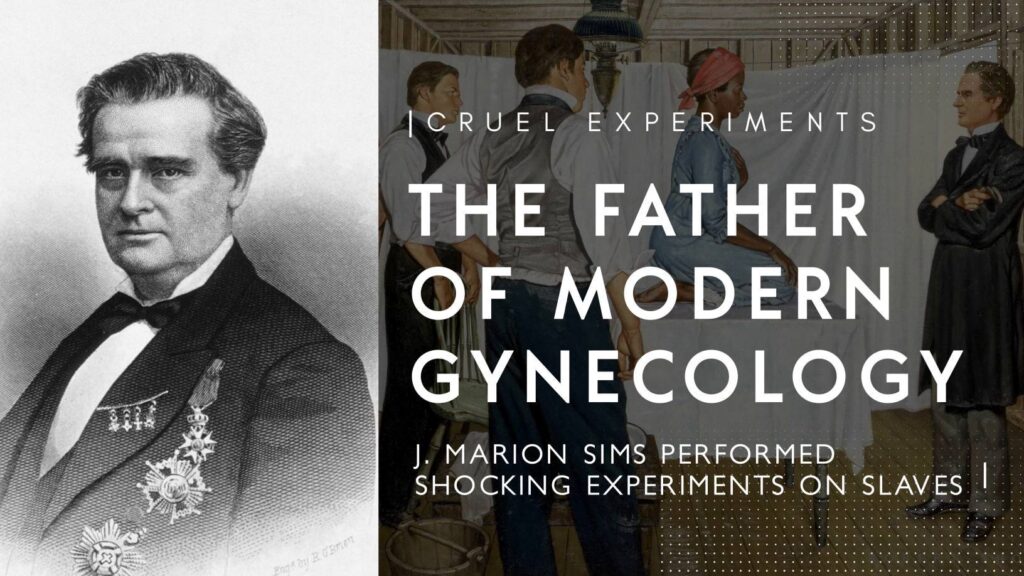
It is said that in the late 1850s, J. Marion Sims purchased Black women slaves and used them as guinea pigs for his untested surgical experiments. He repeatedly performed genital surgeries on Black women without Anesthesia because according to him, “Black women don’t feel pain.” Despite his inhumane tests on Black women, Sims was named “The Father of Modern Gynecology”, and his statue stood right outside of the New York Academy of Medicine until its removal in April 2018, following protests across the country over Confederate statues.
James Marion Sims – The Father Of Modern Gynecology
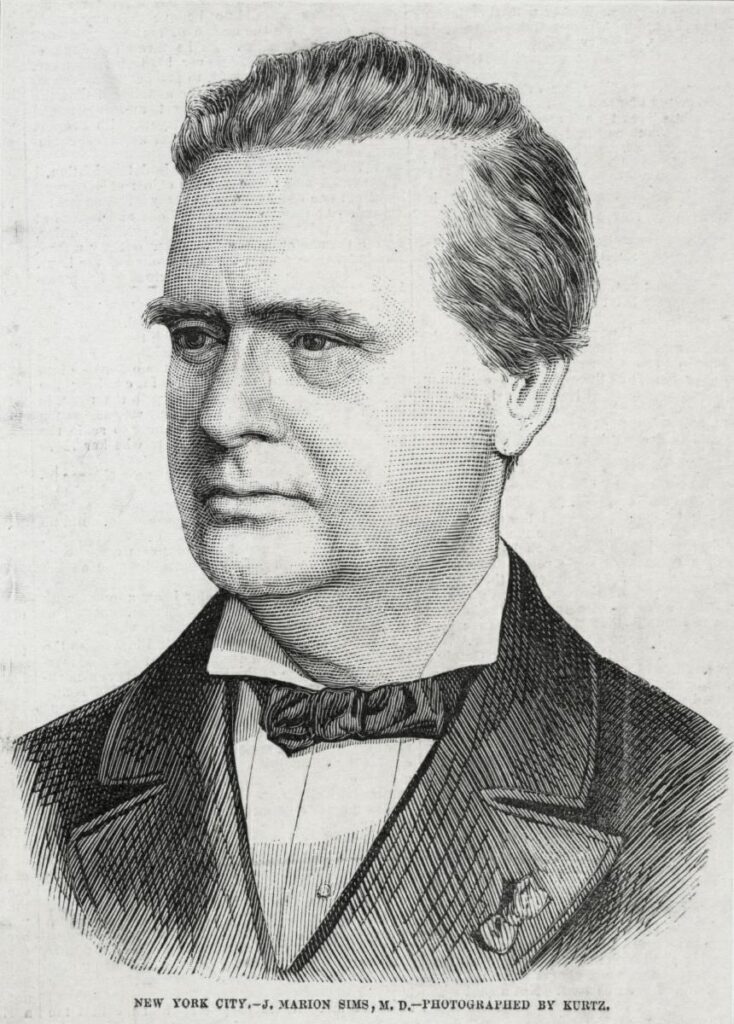
The American physician James Marion Sims (1813-1883) was, without a doubt, the most important surgeon of the 19th century, considering himself today as the father and founder of modern gynecology. Among other things, he developed the first consistent and successful operation for the vesico-vaginal fistula, a terrible medical complication directly related to childbirth, developed between the bladder and the vagina that results in constant and uncontrollable urinary incontinence.
Marion Sims thus managed to solve a medical problem that seriously affected millions of women throughout history, something that so many doctors had investigated and sought without success until then. Praised and admired as a hero in surgical terms, the reputation of Sims did not take in collapse even in this century, when the forms and the methods that the surgeon had used to develop his advances became known, being rightly attacked by the lack of ethics of its procedures.
J. Marion Sims’ Practice Was Deeply Rooted In The Slave Trade
Born in Lancaster County, South Carolina in 1813, James Marion Sims entered the medical profession when doctors didn’t undergo the same rigorous coursework and training they do today. After interning with a doctor, taking a three-month course and studying for a year at Jefferson Medical College, Sims began his practice in Lancaster. He later relocated to Montgomery, Alabama, seeking a fresh start after the death of his first two patients.
It was in Montgomery that Marion Sims built his reputation among rich, white plantation owners by treating their human property. Between 1845 and 1849, he performed various experimental surgeries on African American female slaves which led them to enormous sufferings. In other words, Sims’ practice was deeply rooted in the slave trade.
Sims built an eight-person hospital in the heart of the trading district in Montgomery. While most healthcare took place on the plantations, some stubborn cases were brought to physicians like Sims who patched up enslaved workers so they could produce ― and reproduce — for their masters again. Otherwise, they were useless to their owners.
How Did Sims Enter In That Field?
Like most doctors in the 19th century, Sims originally had little interest in treating female patients — and no specific gynecological training. Indeed, examining and treating female organs was widely considered offensive and unsavory. But his interest in treating women changed when he was asked to help a patient who had fallen off a horse and was suffering from pelvic and back pain.
To treat this woman’s injury, Sims realized he needed to look directly into her vagina. He positioned her on all fours, leaning forward, and then used his fingers to help him see inside. This discovery helped him develop the precursor to the modern speculum: the bent handle of a pewter spoon.
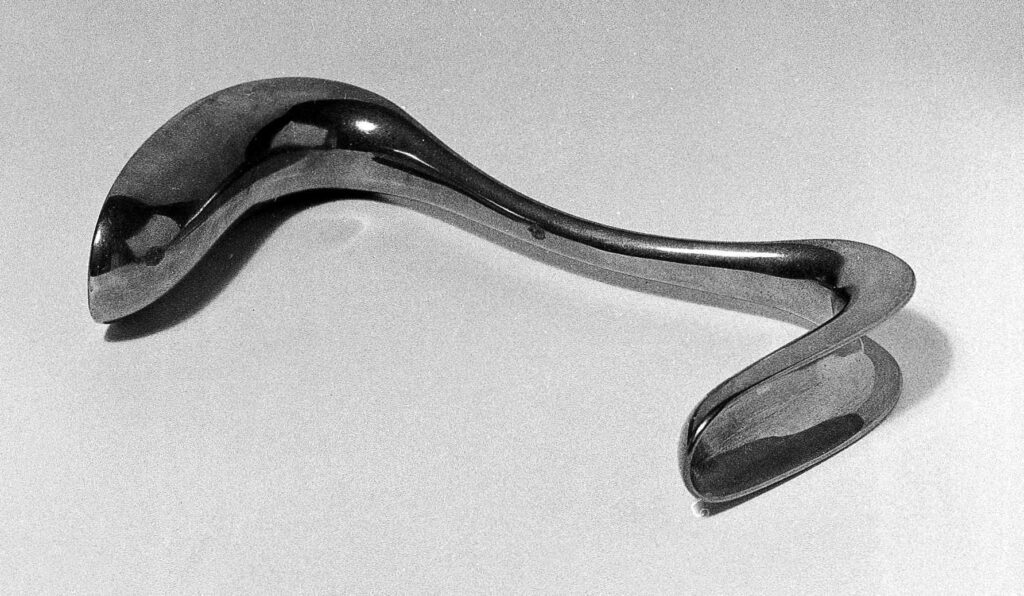
From his examination, Sims could see that the patient had a vesicovaginal fistula. With no known cure for the ailment, Sims began experimenting in 1845 with surgical techniques to treat such fistulas. If the patients’ masters provided clothing and paid taxes, Sims effectively took ownership of the women until their treatment was completed.
Sims’ Experimental Surgeries Were Mostly Unethical And Cruel
Sims’ surgeries were performed without anesthesia, not only because by then its use in medicine was just being developed, but because Sims himself argued that the pain was not of sufficient magnitude that the use of anesthesia was necessary, something with which the women did not agree in the least, although of course, they were not heard either. While according to some, Sims personally believed that “Black women don’t feel pain.”
During the four years, Sims experimented with dozens of female slaves in his old hospital in the Montgomery, as a result, incalculable was the damage he caused to his victims. Some of them received the surgeries repeatedly, such as the well-known case of a young slave named Anarcha Westcott, who suffered from either a vesico-vaginal or a recto-vaginal fistula problem and received 30 operations from Sims before he was able to perform, closing the holes between her bladder and rectum.
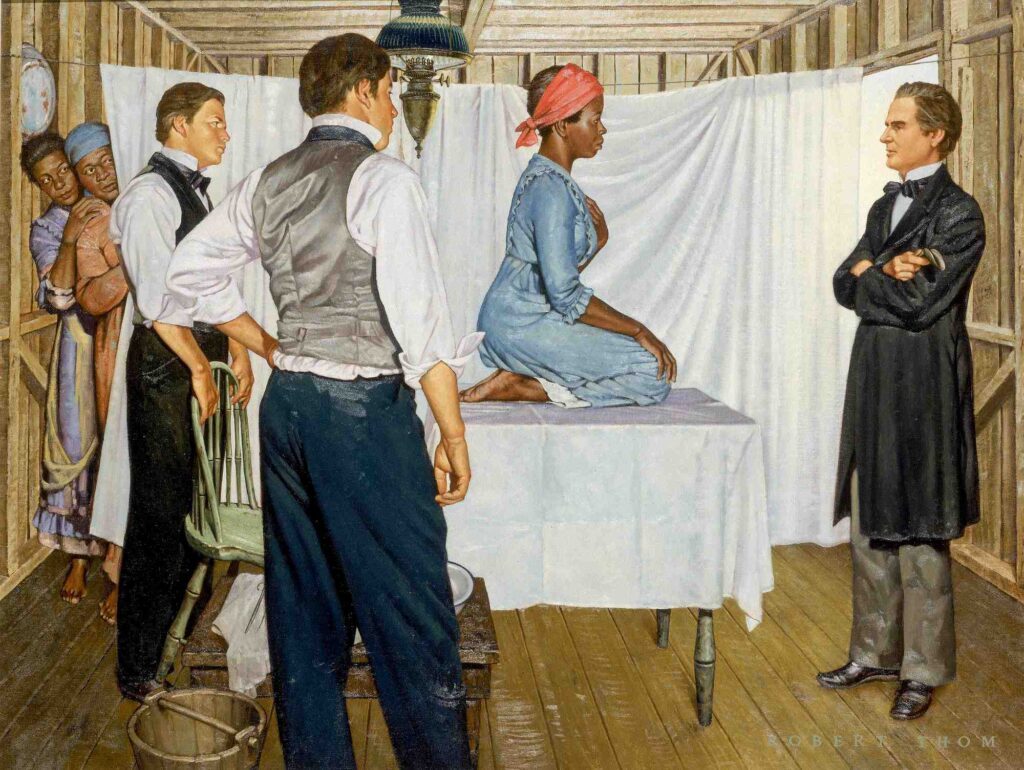
Another patient Sims operated on was 18-year-old Lucy, who had given birth a few months prior and hadn’t been able to control her bladder since. During the procedure, patients were completely naked and asked to perch on their knees and bend forward onto their elbows so their heads rested on their hands. Lucy endured an hour-long surgery, screaming and crying out in pain, as nearly a dozen other doctors watched.
As Sims later wrote in his autobiography, The Story of My Life, “Lucy’s agony was extreme.” She became extremely ill due to his controversial use of a sponge to drain the urine away from the bladder, which led her to contract blood poisoning. “I thought she was going to die… it took Lucy two or three months to recover entirely from the effects of the operation,” he wrote.
Today it is known that none of the surgeries performed by James Marion Sims were consensual, women were forcibly handcuffed and forced to undergo Sims’ brutal and extremely painful experimental procedures.
Another unlucky slave was Betsy who also went through the same fate as Anarcha and Lucy went. To say, Lucy, Anarcha and Betsy are “The Mothers of Modern Gynecology” in term of contribution.
Experimenting On Enslaved Children
Writer and medical ethicist Harriet Washington says Sims’ racist beliefs affected more than his gynecological experiments. Before and after his gynecological experiments, he also tested surgical treatments on enslaved Black children in an effort to treat “trismus nascentium” (neonatal tetanus) — with little to no success. Sims also believed that African Americans were less intelligent than white people, and thought it was because their skulls grew too quickly around their brain. He would operate on African American children using a shoemaker’s tool to pry their bones apart and loosen their skulls.
Conclusion
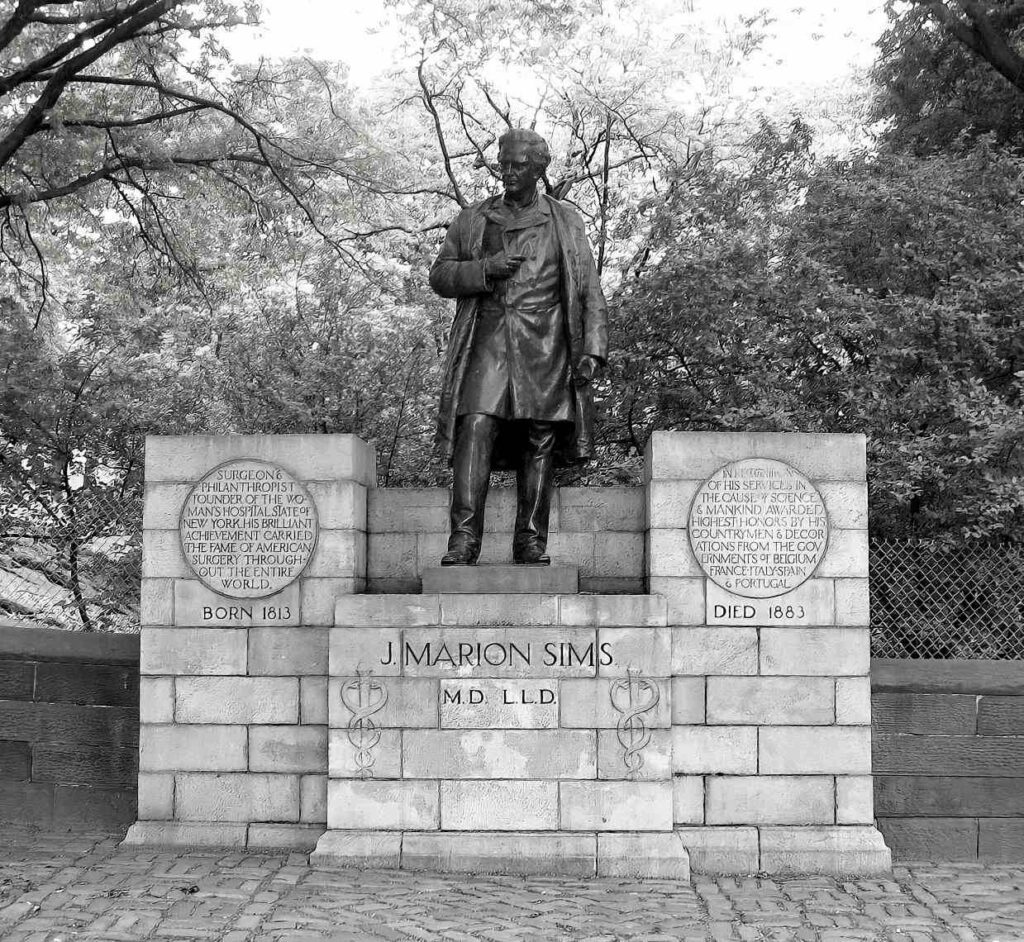
The chilling history of modern gynecology and how J. Marion Sims experimented with performing vaginal surgeries without anesthesia on Black slaves remain a debated topic to this day. Over the years, many women and men demonstrated against the statue of J. Marion Sims in New York’s Central Park, to protest his abuse and demand his removal. The statue was removed in April 2018, and was relocated to Green-Wood Cemetery in Brooklyn, New York, where Sims is buried. But the question which still remains deep in mind: “Is this the fact that without cruelty, there’s no development in science??”




